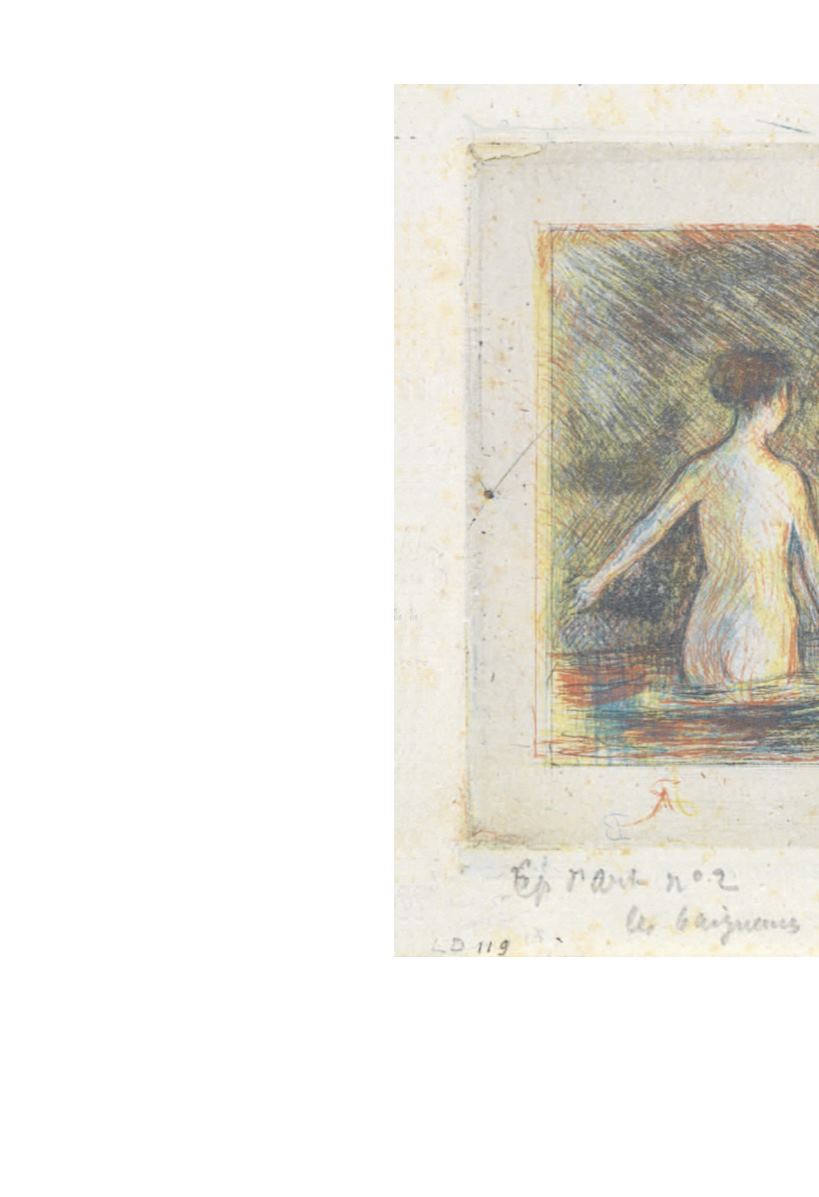

302
●
CAMILLE PISSARRO
Les Baigneuses gardeuses d’oies.
Color drypoint printed from four
plates (blue, red, yellow and black)
on antique, cream laid paper, circa
1895. 90x150 mm; 3
3
/
4
x6 inches, full
margins. Ninth state (of 9). One of
approximately only 20 lifetime
impressions printed in colors in all
nine states combined, several printed
in only three colors (there were also
11 posthumous impressions printed
in colors, see lot 315). Signed, titled
and inscribed “Ep. d’art no. 2” in
pencil, lower margin. With the
registration marks at the left and right
plate edges and the color
remarques
at
the lower left plate edge.A very good
impression of this extremely scarce
color print.
We have found only 4 other lifetime
impressions printed in colors at
auction in the past 30 years.
This is one of only five different etched
or drypointed subjects executed by
Pissarro in colors; he also produced one
color lithograph (see lots 311-314).
Despite being a master colorist through
oil paintings, watercolors and pastels,
Pissarro found color printmaking to be
mostly disappointing. Part of the
limitation he experienced doubtlessly
came from his reluctance to work with
other master printers to achieve more
technically complex color prints,
whether in intaglio or lithography.
According to the artist’s son Ludovic,
“Pissarro frankly hated the aquatint
in color printed
à la poupée
, that is, a
colored aquatint in which a number
of colors are printed on the same plate
at the same time, a fashion which was
becoming popular [Degas had likely
printed some impressions in this
manner for Pissarro in the late 1870s].
He then took to making experiments
in color printing but in a different way. He used for this four plates, one for each color,
blue yellow and red, and a key plate, black, for the outline.These plates were passed under
the press in succession, as in the typographic process, the great difficulty in this attempt
was to secure perfect register with the needle on damped paper, a matter calculated to
drive a person mad with impatience! He therefore gave up the idea. But these experiments









